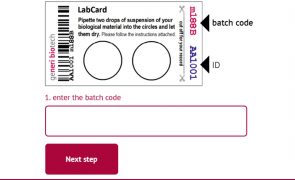 More
More
General Terms and Conditions
Using a forensic kit, selected autosomal polymorphisms are amplified in a multiplex PCR. The polymorphic fragments of DNA are then separated in capillary electrophoresis. The same method is applied as well in forensic testing.
In the tested cell line, a profile of genomic DNA is carried out using fragmentation analysis. The profile is then compared to a previously published reference profile. After comparison of the two profiles, it is revealed if the profile of the tested cell line is identical with the reference profile or if it contains contamination from a different cell line.
In research experiments in life sciences, using a misidentified or cross-contaminated cell line concludes in faulty experimental data and unreproducible results. Cell phenotype often changes when the cell passage number is too high. It is estimated that 18 – 36 % of all cell lines used for research experiments were misidentified or crosscontaminated by a different cell line. Some scientific journals recommend that cell lines are authenticated prior to publishing an article. 1 J.R. Masters, J.A. Thomson, B. Daly-Burns, Y.A. Reid, W.G. Dirks, P. Packer, L.H. Toji, T. Ohno, H. Tanabe, C.F. Arlett, L.R. Kelland, M. Harrison, A. Virmani, T.H. Ward, K.L. Ayres and P.G. Debenham: Short tandem repeat profiling provides an international reference standard for human cell lines; PNAS 2001; 98(14): 8012-8017; doi:10.1073/pnas.121616198
The test can comprise:
Customer provides us either with an extracted genomic DNA or a yielded cell pellet.
If the delivery time does not exceed 24 hours, send samples chilled to 2 to 8 °C (on wet ice), otherwise we recommend delivery on dry ice.
We provide you with an protocol in English.
| Cat. No. | Product | No. of reactions | Price |
|---|
| 1860 | Authentication of cell line - human |
Add to Quote Add to Quote |
| 1861 | Authentication of cell line - human, DNA extraction |
Add to Quote Add to Quote |
Shiping at ambient temperature from
€ 40 (EU)
For other destinations see
indicative list.
General Terms and Conditions
Your request has been sent.
Dispatch date
Within 10 business days upon receiving samples
Shipping
Reporting protocol in a printed version – by Czech Post or electronically by email
This product has not been validated for your cycler?
Send us the type of your cycler and we will find a solution for you.
Your request has been sent.
Thank you for your interest in our testing services. We will reply to your e-mail address as soon as possible.
Thank you for your inquiry
Thank you for your inquiry
Your registration has been sent.
Thank you for your inquiry
Price will be calculated based on your exact location within 2 working days.